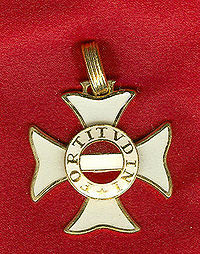After the Italian annexation in 1920, Trieste suffered the traumatic removal of its historical identity. The occupant cancelled half a millennium of history. A forced Italianization that actually means ethnical cleansing.
From the Italianization of family names and toponyms to the eradication of old traditions, up to the mystification of history: this is how this city-state was colonized.
A colonization that soon became – with the imposition of the Italian system – an economic collapse due to the planned destruction of Trieste’s Free Port, once Austria-Hungary’s pride and joy.
This operation to “convert” Trieste to the “superior” Italian culture is well visible considering how many streets and squares lost their names, and received new ones to honor the “redemption” in favor of the names of the Italians – famous but also unknown – who had freed Trieste from what history books keep presenting, to the present day, as a tyrannic empire.
Streets, squares, and monuments dedicated to the winners of the “Young Italy of deviant freemason lodges”, triumphant over the old and multiethnic Habsburg Empire. This is how the occupants rewrote the history of the city “dear to Italians”.
We cannot forget our history, we don’t want to forget our history. we must never forget our history.
Each person of Trieste can tell it, offering a tribute of truth and of justice, against the false truth of a State the nationalism of which is still occupying our land and suffocating our rights.
Roberto Giurastante

The forgotten heroes of the Isonzo and of Trieste: Theodor Wanke
October 10th, 1916: after a week of hammering bombing, the 8th battle of the Isonzo begins. Italian artillery has about one thousand cannons that won’t stop bombing with many projectiles the defensive line of the 5th Austro-Hungarian army: it is a true wall of fire, from Gorizia to the Adriatic.
The Italian infantry attacks the Austrian troops, annihilated by the heavy bombing. Eighteen Italian divisions fight six Austro-Hungarian divisions, which have already been reduced by the barrage of fire. Italian troops do slowly win ground from the central part of the highland, overwhelming the defenders of the 20th Honvéd divisions (Hungarians), then the battle breaks out on the southern side, where the Third Italian Army is attempting the final breach to Trieste.
About 20 kilometers separate the most important port of the Empire from the frontline. Here, the front consists in a row of low hill that rise above the sea. The core of Austro-Hungarian defense is altitude 144, held by the 102nd Czech Regiment. Two Italian divisions attack the altitude.
It is a desperate situation. The defenders are about to be overwhelmed by the continuing assaults of the Italian infantry. The commander of the 3rd Battalion orders the retreat. But the chief of the reserve army at the feet of altitude 144, Lieutenant Theodor Wanke of the 9th Company, disobeys the order: his sector won’t give up to the enemy and shall resist to the last man.
This is how the 9th company, lead by lieutenant Wanke, counter-attacks, surprising the overwhelming troops of the 16th Italian Infantry division. A first Italian battalion falls, so the disorganized Italian retreat starts. The 10th company joins the 9th and, under the command of Wanke, the counter-attack extends.
The 16th Italian division is finally repelled from altitude 144 and the 102nd Regiment is safe. Wanke ends the counterattack at the head of 17 men and captures about one hundred Italian infantrymen.
With two companies, lieutenant Wanke successfully broke down the attack of a whole Italian Army Corp and saved the weakest sector of the Austro-Hungarian defense line on the Isonzofront from the downfall that would have lead to the fall of Trieste as well.
For his heroism, Wanke is awarded the Knight’s Cross of the Order of Maria Theresa, the highest military decoration of the Habsburg era.
Translated from blog “Ambiente e Legalità” – “Environment and Legality” by Roberto Giurastante
